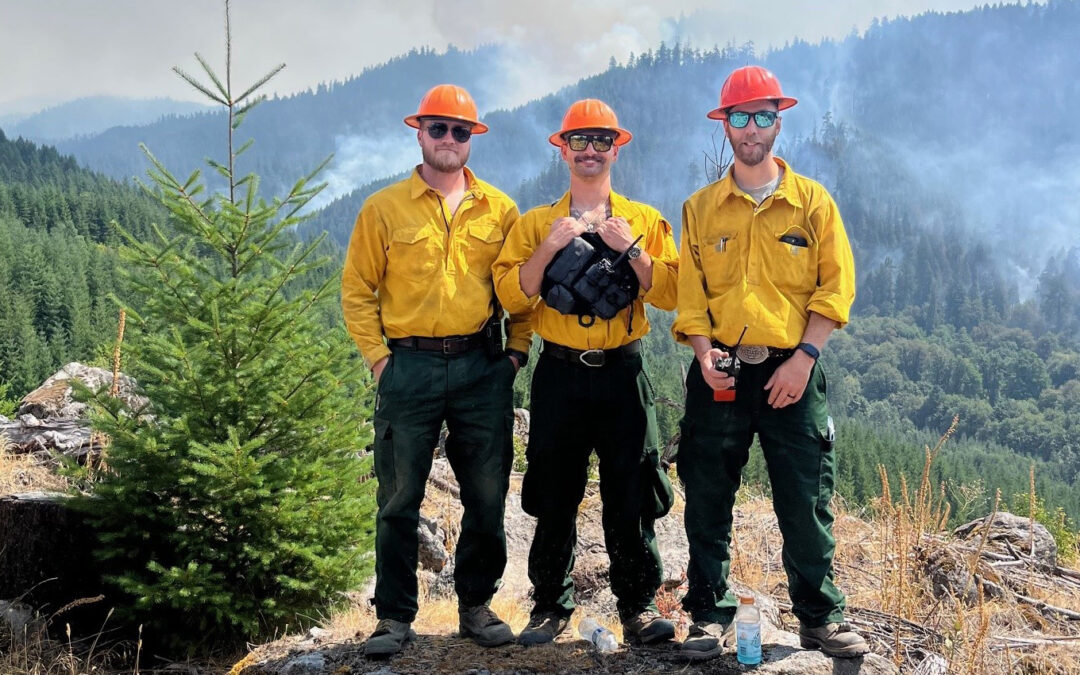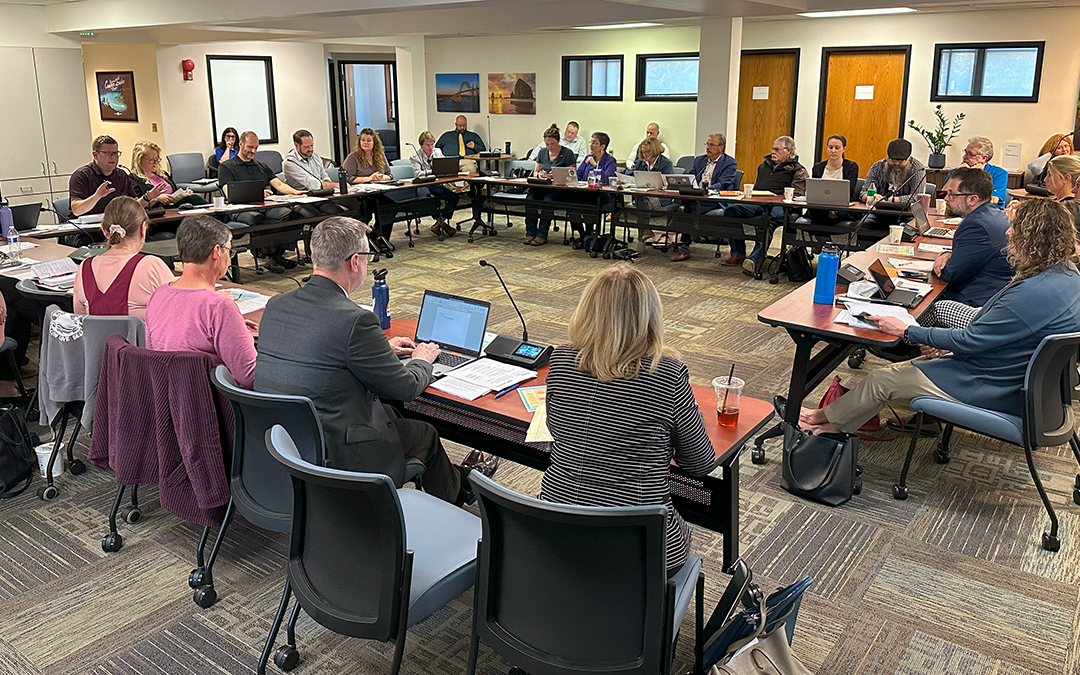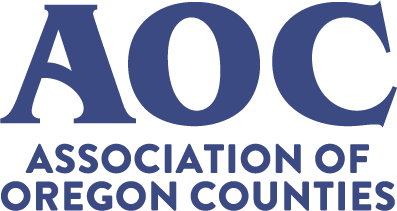
May 24, 2024 | AOC Business Partner
Sponsored content contributed by AOC Business Partner: Public Surplus
Public Surplus has partnered with AOC to help counties sell surplus property online through their online auction website. If your county or department has surplus equipment, vehicles, real estate, tax sale property, or anything else, Public Surplus can help you sell it quickly with some of the lowest buyer’s premium fees in the country!
The Public Surplus online auction system was created with unique capabilities exclusively for public agencies. We are confident that our solution will generate more revenue, increase transparency, and reduce the overhead of your surplus operations.
Below are just a few of the many features that over 4,000 government agencies are taking advantage of today.
Features:
- Comply with state, federal, and local regulations: Designed specifically for government agencies you can rest assured that we designed our system to meet and exceed all regulations regarding surplus disposal for your agency.
- Simplicity: Simple navigation and ease of use, all without sacrificing powerful functionality.
- Large/Qualified Buyer Database: Increase the number of buyers from your own community and combine them with the largest database of qualified buyers for government agencies.
- Increase Revenue – typically 30% – 60% more net revenue when compared to live auctions. We consistently out perform our online competitors as well.
- NO COSTS: Our solution is easy on the budget. There is no cost to your agency when selling on Public Surplus. Free registration, free listing and free payment collections. All fees are paid by the buyer in the form of a buyer’s premium and the agency will not be charged anything. Lower buyer’s premium available with the AOC program!
- NO commitment required: With a no cost solution many agencies don’t require a contract and can use us on an at will basis. If a contract is required please ask us about one of our national cooperative contracts.
- Auction Extensions: Increase revenue and parity with our auction extensions. Everyone has an equal chance to compete while driving up the prices of your auctions.
- Specific and Customized Reporting: Our reporting solution is second to none. Let us surprise you with just how comprehensive and simple it is to pull auction data.
- Payment Collections: Let us take away the hassle of collecting payment from buyers.. Buyers can pay via credit card and wire transfers for convenience and security.
- Control: Live auctions and many online solutions leave government agencies powerless when selling their surplus assets. Public Surplus gives you and your agency complete control. Set reserve pricing; retract auctions, and so much more.
- Transparency: Increased visibility coupled with increased access are a winning combination for government agencies. We know of no other online solution that offers the level of transparency Public Surplus does.
- Customer Service: Unmatched customer service. Your agency will have a dedicated support representative to assist you at anytime during business hours. Whether it be for training or just simple questions on the value of an item you are listing, our support representatives are there to assist your agency.
Our brief 30-minute online presentation is the best way to show you the power of our online auction system when coupled with software designed specifically for public agencies. Please reach out to Jaren Waters (801)-932-7000 Ext. 428 jarenwaters@thepublicgroup.com – if you are interested in viewing a presentation about Public Surplus.
If you are ready to get started selling with Public Surplus, click this link and fill out the one-page registration application. The registration link below will connect you to the Public Surplus/AOC program.
Please call us today to find out how your county can benefit!

May 24, 2024 | AOC Business Partner
(Pictured above: Weston Tilton, roads manager; Niko Monaco, silviculture forester; and Dylan Johnson, forester, on our Springfield tree farm in Oregon. Smoke from a wildfire is visible in the background.)
Sponsored content contributed by AOC Business Partner: Weyerhaeuser
In September 2020, the Holiday Farm Fire burned across nearly 166,000 forested acres in Oregon. Some of those impacted acres — including some acres of Weyerhaeuser land — were so damaged the soil couldn’t hold water. That meant many seedlings planted there would not survive.
“As foresters, we put our hearts and souls into these places, so it’s devastating to see them like that,” says Nate Meehan, a forest engineering specialist in Oregon’s Mid Coast tree farm. “But that’s also what motivates us to keep going, no matter what challenges we face.”
Post-wildfire recovery on Weyerhaeuser’s impacted tree farms — Springfield, Snow Peak, South Valley and Clackamas — is a long-term process requiring patience, collaboration and experimentation. All while the next wildfire season looms just around the corner.
“Fire prevention and readiness is top of mind, and we’ve worked very hard to increase our capacity to respond while also working on reforestation,” says Niko Monaco, a silviculture forester in Springfield. “Nothing has been more important than building strong relationships with each other, with our state and federal partners, and with the contractors who jump into action with us when needed.”
MAKING UP FOR LOST TIME
The Holiday Farm Fire footprint is significant, and replanting damaged areas requires a massive influx of tiny new trees. Weyerhaeuser’s Springfield tree farm alone plants an average of five million seedlings each year; most of our other Oregon tree farms plant one or two million seedlings.
To help get trees in the ground, everyone on the Springfield forestry team has dedicated extra time to replanting and recovery. Each of Springfield’s foresters is a lead on a large recovery project.
“Fires tend to spark growth of new competing species that can be more tenacious than the previous ones that grew in those areas, taking moisture and nutrients away from our seedlings,” says Dylan Johnson, who’s overseeing vegetation management for Springfield. “And that’s just one complicating factor converging with many others.”
Weather also complicates things. The summer of 2022 brought drought and unusually high temperatures, which caused widespread mortality of newly planted seedlings. The Springfield team worked to understand the size and quality they needed in their replacement trees to help them survive, then replanted the areas most affected. They’re making steady progress despite such setbacks, whittling the initial estimated recovery time from seven years down to four.
“It’s a passion project for many of us, and everyone involved is doing a phenomenal job,” Niko says. “It’s amazing to see such dedication and determination at work.”
TAKING PROACTIVE STEPS TOGETHER
Working hard on recovery efforts while simultaneously planning for future fires is hard both mentally and emotionally on our employees and contractors. But they say they’re buoyed by the sense everyone is in it together — not just within Weyerhaeuser, but across the entire industry.
“During the Holiday Farm Fire, I worked shoulder to shoulder with our competitors,” Nate says. “We were completely synchronized, putting every ounce of our energy into fighting the fire. Without our combined numbers and prevention efforts on our own lands, the government would have a much harder time controlling the wildfires that occur nearly every year now.”
Over the last four years, our Oregon tree farms have improved their strategies and tools, which include hoses, pumps, water tenders, fire engines, helicopters and heli-ponds that provide a source of water when needed. And our Aviation team has long played a critical role in controlling the spread of wildfire on our property.
“Many wildland fires take place in hot, high and radical terrain, which makes it difficult to reach them,” says Michael Stephens, chief pilot for Western Timberlands Aviation. “In order to respond, our Aviation team spends a lot of time on training and certification each year. It’s a lot of pressure, and pilots need to have the skills and competencies to fly this mission safely.”
Historically, our Aviation team has been dedicated to fires on our property. But a new Industrial Resource Agreement with the Oregon Department of Forestry allows certified private contracting crews to put out fires on state lands, which are often adjacent to our farms.
“The ODF contract has been beneficial in that our team is able to reach fires before they involve our property and spread to nearby communities,” Michael says.
Nate agrees and is excited about the new levels of partnership the agreement unlocks.
“It’s a win-win, because it gives our planting and harvest crews paid work in their off-season,” Nate says. “I’m also involved in the ODF’s Local Resource Boss program, which allows me to direct crews and other resources to an ODF-controlled fire. That sense of partnership is crucial to our success.”
LIGHTENING THE LOAD
As more employees gain wildfire experience and firefighting certification, the burden of keeping our property and communities safe can be spread between more people.
“Of course, those of us in the company who respond to fires when needed don’t have quite the level of stress that professional wildland firefighters have, but events like the Holiday Farm Fire can still be traumatizing,” Nate says. “I’m so glad we can turn to resources like the Fighting Fires Together Campaign to get support if we need it. It could change somebody’s life.”
Now in its third year, Fighting Fires Together is a partnership between Weyerhaeuser and Firefighter Behavioral Health Alliance to help provide specialized support and mental health resources for wildland firefighters. Free resources are available to support the mental health of firefighters, their families and their communities through mental health tips and resources, community groups, occupationally aware mental health professionals and more.
“It’s a big step just to have a conversation about firefighting and mental health,” Niko says. “No one was really talking about it until just a couple years ago, and it’s refreshing to get it out in the open.”

(Pictured above: A helicopter drops water on the Bedrock Fire last year. “I feel really lucky with the relationships we have here,” Dylan says. “During last year’s Bedrock Fire, we had to call contractors at 5 p.m. and ask them to come out with their equipment. We said, ‘We need your help or this fire is going to burn our property.’ And they showed up early the next morning with smiles on their faces and machines at the ready.”)
Contributed by: Stephanie Rogers, Weyerhaeuser

May 22, 2024 | AOC Business Partner
Sponsored content contributed by AOC Business Partner: CIS
As the season turns to spring, CIS gears up for its highly anticipated Spring Supervisor Training, an essential workshop focused on the intricacies of workplace investigations. Led by CIS’ respected Pre-Loss and Hire-to-Retire staff, these training sessions are tailored to equip HR personnel, supervisors, and managers with the skills necessary to navigate investigations confidently.
For those yet to secure their spot, this is an opportunity not to be missed. Workplace investigations can often resemble a complex labyrinth, but armed with the right expertise, individuals can steer clear of legal entanglements and effectively resolve conflicts within their organizations.
Participants in these hands-on workshops will immerse themselves in real-life case studies, assuming the role of investigators themselves. Guided by CIS’ expert team, attendees will gain insights into crucial aspects such as the weight of evidence, the determination of investigation scope, the timing for involving external investigators, and the paramount importance of maintaining confidentiality throughout the process. Furthermore, essential documentation practices and insights into employment law will be provided sans the legal jargon.
By the conclusion of these sessions, attendees will emerge with a comprehensive understanding of how to reach fair and effective conclusions. Armed with this knowledge, they will be better equipped to handle employee complaints and navigate conflicts in a manner that fosters trust and fairness in the workplace.
Join CIS for one of the Spring Supervisor Training sessions, as spots are filling up quickly. Together, let’s embark on the journey of tackling workplace investigations and fostering a more harmonious work environment for all.
Registration Information
Dates and Locations (Please note that each location offers two date options. Sessions will be conducted as “lunch and learn” events without a separate lunch break.)
- May 14 or 15, 9:30 a.m. – 2:30 p.m. The Dalles
- May 21 or 22, 8:30 a.m. – 1:30 p.m. Redmond
Cost $25 for CIS Members with General Liability coverage. The fee includes lunch, as well as coffee, tea, and water throughout the day. Travel, lodging, and additional meal expenses are the responsibility of the CIS Member.
Register at learn.cisoregon.org
Questions? Contact the CIS Learning Center at 503-763-3800 ext. 8 or via email at learn@cisoregon.org
CIS Annual Conference Receives High Marks from Attendees
A total of 662 CIS members, agents, staff, sponsors, and other attendees, participated in CIS’ 22nd Annual Conference earlier this year. While 608 participated in person, virtually, or through a combination of both, the popular event was a resounding success, receiving a 98% rating of Excellent/Good from survey respondents.
Based on survey results and comments, members were pleased with the overall organization of the event. One individual said, “I absolutely love the CIS conferences. I learn so much, and of course, love earning prizes! But, seriously the information and networking is the best!” This reaction was echoed by many, highlighting the overall positive reception for this year’s conference.
Besides appreciating the excellent speakers and topics, the organization and timeliness were listed as standout features. Members noted that the agenda was well-planned and appreciated the efforts to ensure sessions started and ended on time, a fact noted by one attendee who remarked, “The conference was run with efficiency and timeliness. Sessions started on time.”
For first-time attendees, the range of topics covered was particularly impressive. They said, “Attending this conference for the first time was a wonderful and informative experience. I gained so much insight and knowledge from the speakers and breakout sessions. I felt that it was an extremely valuable experience.”
The conference’s focus on delivering relevant and practical information was evident, drawing praise from many members who found it “informative and engaging.” Particularly for smaller entities lacking dedicated HR personnel or legal staff, the opportunity to learn about updated policies and legal precedents was invaluable.
Members also appreciated being able to stay home and catch the conference from the comfort of their offices. They praised the event’s accessibility and user-friendly technology. “Flawless online attendee here … this was simply perfect,” one participant shared.
This was by design.
According to CIS’ Communications, Events, and Project Manager Julie LaMarche, “our conference committee was committed to ensuring a positive experience for all attendees, regardless of how they participated. Our goal is to not only meet but exceed our attendees’ expectations, delivering an exceptional learning experience and trying our best to ensure a seamless execution.”
Additionally, the conference’s diverse lineup of sessions was described as “timely and well presented.” From employment law to risk management strategies, attendees found sessions relevant and informative. The engagement of CIS staff to ensure a smooth and engaging conference experience did not go unnoticed by members.
“Our members recognized our staff’s professionalism and expertise,” according to CIS’ Executive Director Patrick Priest. “This year’s conference will be hard to top, but I’m confident that we’ll do it, in February 2025.”
The CIS Conference Committee is already planning for next year’s event at the Salem Convention Center, so save the date: Feb. 26-28, 2025.
CIS Benefits Team Schedule Summer Renewal and Benefit Advisory Committee Meetings in June and July
For those counties with CIS Benefits, CIS is now gearing up for Benefits Renewals so it’s time to prepare to complete your renewal (aka Request for Coverage) online this July.
You may be asking: What is a Request for Coverage (RFC) and why is it done so early?
The RFC is your contract with CIS Benefits for employee benefits coverage for the upcoming calendar year. This is your opportunity to compare and select the coverages to offer employees. While it may seem early to complete this in July, the timing is critical.
Once the process is completed, the CIS Benefits team reviews each and every selection, submits the changes to their programmers, tests the enrollment system and prepares for a successful Open Enrollment. Your help in doing the renewal on time and with accuracy is crucial in making sure that your employee open enrollment goes as smoothly as possible.
The first step in the renewal process is to attend a regional Employer Benefits Renewal meeting in your area. CIS hope that you can attend in person to hear all the renewal details, ask questions, and listen to any questions others might have. They include lunch as part of the meetings, and the information shared is always valuable for everyone in attendance. You can register for a meeting near you online at www.cisoregon.org/benefitsrenewal.
Below is the schedule for our summer Employer Benefit Renewal and Benefits Advisory Committee (BAC) meetings. Please register in advance to attend. CIS values in-person engagement and encourage everyone to attend in person, if possible.
Date and Locations
- June 17 Central Point and La Grande
- June 18 Florence and Hermiston
- June 25 Keizer
- June 26 Lincoln City and The Dalles
- June 27 Astoria and Tigard
- July 10 Virtual
If you have any union groups currently covered by CIS Benefits that have been or are in collective bargaining, CIS encourages you to reach out to your Benefits Representative to discuss what that might mean for your renewal. If not, you don’t need to worry about this. That’s it! With all these complete, you’ll be ready to attend a renewal meeting and complete your benefits renewal in July. CIS looks forward to continuing to partner with you to make sure you continue to offer the best possible benefits for your employees.
Regence and Legacy Health Reach Agreement
On April 1, CIS had some great news when Regence and Legacy Health reached an agreement. This means that Legacy Health will remain an in-network provider, and CIS members enrolled on a CIS medical plan administered by Regence will continue to have access to Legacy Health providers. Check out Regence’s official statement. If you have additional questions, please contact your CIS Benefits Representative.
Benefits Contacts
- Lori Newsome, Members A-B & T-Z, 503-763-3855
- Heidi Carter, ,Members C-H, 503-763-3863
- Linnea Zahradnik, Members I-K & O-S, 503-763-3883
- Heather Matthews, Members L-N, 503-763-3826
CIS Unveils 2023 Annual Report
Recently, CIS unveiled their digital Annual Report for 2023. They received many nice comments about the report. For those who may have missed it, here’s a copy.
Brief Orientation Videos Explain CIS Coverages and Services
CIS strives to make their coverages and services easier to understand. To further this strategic goal, they have six concise orientation videos that explain: Underwriting, Claims, CIS Benefits, Risk Management, and Pre-Loss. They also have a brief overview video titled Stand with Us. To learn more about your selected CIS coverage or service, please take a moment to watch some (or all) of the videos.

Mar 29, 2024 | AOC Advocacy, AOC News, Health & Human Services
This year’s short legislative session was remarkably successful, as the Association of Oregon Counties (AOC)’s health and human services priorities largely aligned with those of legislators on both sides of the aisle. The following policy and funding bills, effective upon the governor’s signature, will better equip counties to address the state’s dual homelessness and substance abuse crises.
HB 4092 addresses AOC’s top health and human services policy priority, and requires a mandatory cost study to be conducted every five years for services that our community mental health programs are statutorily mandated to provide. The study is aimed to capture the true cost of the service delivery array, correcting for inflation-based increases as well as unfunded mandates. The first study is due in December 2024 and because of the short timeframe, will be limited to court-mandated services. A full study will be conducted in 2025.
HB 4092 also mandates and funds a workgroup to recommend measures to reduce the administrative burden on community mental health programs and their local contracted providers. The report is due at the end of the year. A survey of local providers estimates that 40% to 60% of every clinician’s day is spent on administrative work rather than direct care. Any reduction in this burden will immediately increase Oregon’s public behavioral health services capacity.
HB 4002 (Measure 110 reform policy bill) establishes local jail-based and mobile medication for opioid use disorder programs through grants from the Criminal Justice Commission. The bill requires at least 10% of total grant awards to be awarded to facilities in rural areas.
HB 5204 (omnibus funding bill for Measure 110 reform and related programs) provides:
- Gap funding for specialty courts, aid and assist community restoration services, and jail diversion
- Start-up funding for county deflection (pre-arrest diversion) programs
- Start-up funding for the medication for opioid use disorder program
- Behavioral health workforce development funding at Oregon universities to attract and support students acquiring degrees and certifications
HB 4001 establishes an interim task force that will recommend specialty court system improvements and sustainability measures for consideration in the 2025 session. There are two seats on the task force for county government.
Contributed by: Legislative Affairs Manager Jessica Pratt

Mar 29, 2024 | AOC Advocacy, AOC News
On Wednesday, March 27, Governor Kotek signed SB 1576, which contained a “recreational immunity” fix eliminating the excessive liability that was causing local governments across Oregon to close off public access to trails on their land. With the governor’s signature, the law has now become effective, meaning that “NO ACCESS” signs can be taken down immediately. The Association of Oregon Counties (AOC), together with the Oregon Recreation and Parks Association, the League of Cities, the Special Districts Association of Oregon, the Oregon School Boards Association, and many other public landowners, worked hard to persuade the legislature to enact this legislation.
The new protections only last through the end of 2025, so another bill will have to be passed during the 2025 legislative session to preserve the protections. AOC expects to continue participating in the Coalition to Restore Recreational Immunity as efforts to get a permanent fix continue.
Citycounty Insurance Services (CIS) had issued guidance encouraging trails be closed because of the liability risk arising out of the Fields v. City of Newport case, where court rulings severely curtailed the landowner protections recreational immunity law provides. CIS is updating its Recreational Immunity FAQ page to reflect the fact that the excessive liability around public access to trails is gone.
In a message to its clients, CIS wrote: “Because SB 1576 went into effect immediately, all trails that were previously closed due to the Fields v. City of Newport court decision can now be reopened without undue risk to local government budgets and programs. CIS is very happy to encourage local governments throughout Oregon to let their constituents know that all trails and recreational opportunities are open for business once again, and will remain open throughout the summer season.”
CIS General Counsel Kirk Mylander will be joining AOC’s Governance, Revenue, and Economic Development Steering Committee meeting on April 12, to review the new law and answer questions from county representatives. A recording of the meeting will be made available here.
Contributed by: Legislative Affairs Manager Michael Burdick

Mar 28, 2024 | AOC Advocacy, Governance, Revenue, & Economic Development
Counties are among the organizations now eligible to apply for grant awards under the $157 Million Broadband Deployment Program (BDP). Applications must be submitted by Thursday, April 25, at 5 p.m. (PST) to be considered for grant funding. Projects eligible include the construction and deployment of broadband infrastructure in locations that are unserved or underserved. Read the full press release from Business Oregon announcing the application process here. You may also contact your region’s Broadband Project Coordinator for support in the application process by emailing broadband.oregon@biz.oregon.gov.
For more information, visit the Oregon Broadband Office webpage.
Contributed by: Legislative Affairs Manager Jen Lewis-Goff

Mar 27, 2024 | AOC Advocacy, AOC News, Health & Human Services, Public Safety & Veterans
The short, fast-paced 2024 legislative session ended with real wins for the Association of Oregon Counties (AOC) public safety portfolio. AOC’s Public Safety Steering Committee identified two priorities in advance of the session — increasing state investment in community corrections for the remainder of the 23-25 biennium, and elevating the county voice and role in Ballot Measure 110 reform conversations. Both of these priorities were achieved due to the ongoing advocacy of AOC members.
Community corrections funding
This past fall AOC heard from counties across the state that funding for community corrections was at a critical breaking point. In response, the AOC Public Safety Steering Committee prioritized increased state investments in community corrections funding for the remainder of the 23-25 biennium in the 2024 short session.
Thanks to advocacy from AOC members and community corrections directors, the legislature recognized this critical need and appropriated the requested amount. HB 5204 includes $16 million allocated to the Oregon Department of Corrections for grant-in-aid funding to counties specific to community corrections funding. AOC and other partners have committed to coming to the table over the interim to collaborate on a new funding formula for community corrections, ensuring that future funding formulas are better reflective of current populations coming through community corrections.
Addressing the fentanyl crisis
In addition to community corrections needs, the AOC Public Safety Steering Committee also prioritized Measure 110 reforms in the 2024 legislative session. Specifically, our members asked AOC to elevate the county voice in Measure 110 reform, supporting policy modifications that prioritize engagement in substance abuse treatment, provide sufficient funding for county services, and strengthen tools the criminal justice system can use to fight illegal drug use and sales.
The legislature passed two bills related to Measure 110 reform — House Bill 4002: Measure 110 Reform Policy Package, and House Bill 5204: Measure 110 Reform Funding Package.
AOC staff worked closely throughout session with public safety partners and legislative leadership consistently communicating how potential Measure 110-related policy changes would affect counties. AOC staff advocated for appropriate funds and capacity building at counties, while also pushing for maintaining the integrity of counties’ local mental health authority. AOC President Danielle Bethell testified on behalf of AOC in front of the Joint Committee on Addiction and Community Safety Response during a public hearing on HB 4002 and relayed AOC’s position, which was also submitted as written testimony. AOC is grateful to our members, partners, and the legislature for passing meaningful legislation and centering counties in the policy development process and policy implementation. View a comparison of AOC adopted principles with the final bill outcomes here.
HB 5204 allocates more than $110 million to counties and county-related programs for infrastructure projects, standing up deflection programs, supporting specialty courts, funding community corrections, and more. HB 4002 creates a new PCS-U misdemeanor for possession of a controlled substance, and offers pathways to expungement, dismissal, or no charges filed. Deflection programs will be created and coordinated at the county level, with public safety and behavioral health partners working together. Access a visual flowchart of how deflection works here. Twenty-three counties have indicated interest in setting up a deflection program. AOC will continue to keep our members informed on the progress of HB 5204 funding and HB 4002 deflection program implementation through regular meetings and email communications.
Contributed by: Legislative Affairs Manager Jen Lewis-Goff

Mar 27, 2024 | AOC Advocacy, AOC News, Natural Resources
In November 2017, the Oregon Board of Forestry (BOF) directed staff to evaluate whether the pursuit of a Habitat Conservation Plan (HCP) in conjunction with the issuance of incidental take permits made sense from a ‘business perspective.’ Specifically, BOF staff sought to determine whether the HCP could meet their twin goals of ensuring financial security for those that obtain revenues through harvest and providing adequate habitat for the 15 species targeted for mitigation by the department. The BOF voted to continue the HCP development process upon receiving the Business Case Analysis in 2018. As a first step, the Oregon Department of Forestry (ODF) prepared a Comparative Analysis between three different management plans: the current forest management plan, a draft revised forest management plan, and the proposed HCP. Upon reviewing the report, the BOF convened and directed staff to continue the process and requested a National Environmental Policy Act (NEPA) analysis from the federal services. The NEPA analysis was released in March of 2022.
During every stage of the HCP development, the Forest Trust Land Advisory Committee (FTLAC) received information regarding the proposed modeled average annual harvest volumes generated from the lands deeded to the state in trust for long term management and Greatest Permanent Value. Over the past seven years, trust land county commissioners became more and more concerned with the continued reduction in proposed harvest (see habitat conservation area maps). Timber harvest not only generates general operating revenues for county governments, special districts, and schools, but the industry provides family wage jobs in their communities.
Trust land counties have a 10-year average of 249 million board feet (MMBF). The harvest projections under the proposed HCP decreased from 250 MMBF to 225 MMBF. The projections dropped again to 165-180 MMBF in the Implementation Plans and most recently the December 2023 modeling projections are 161-182.5 MMBF.
Pursuant to ORS 526.156, FTLAC is allocated time on every BOF Agenda to testify on the management of their deeded trust lands. While the FTLAC chair and vice chair have always testified, in March and before the final HCP vote was to occur, all five FTLAC commissioners testified. Many counties also submitted written letters in opposition of the current plan as drafted.
Coos County Commissioner and FTLAC Chair John Sweet, discussed the disappointment counties had in not being included in putting the plan together and how the plan could have been supported by all parties impacted if changes were made. Clatsop County Commissioner Courtney Bangs discussed the fiscal impacts counties will feel as well as the impacts not harvesting will have in management practices and wildfire potential. Columbia County Commissioner Margaret Magruder discussed the financial impact the proposed HCP would have on schools, the state’s overall budget, and the operating revenues at the Department of Forestry. Linn County Commissioner Will Tucker discussed the economics locally of the plan as drafted; and Tillamook County Commissioner and FTLAC Vice Chair Erin Skaar highlighted the challenges counties will face seeking funding from the Legislature and how the BOF and ODF should view counties as partners.
The Board of Forestry ended up voting to move the HCP forward on a vote 4-3.
Contributed by: Legislative Affairs Manager Branden Pursinger

Mar 26, 2024 | AOC Advocacy, Health & Human Services
Addressing Oregon’s opioid crisis and reforming Ballot Measure 110 were among top priorities for legislators during the 2024 short session. HB 4002 and its companion funding bill, HB 5204, passed the legislature overwhelmingly with bipartisan, bicameral support, instituting a variety of new programs and policies. Among those new programs is the Oregon Behavioral Health Deflection Program, established at the Criminal Justice Commission (CJC) to coincide with the newly created misdemeanor for possession of a controlled substance.
The new misdemeanor, coupled with the deflection program, is intended to re-establish local partnerships between law enforcement and the behavioral health safety net to effectively connect individuals to treatment and recovery while minimizing costly interactions with the justice system.
Twenty-three Oregon counties opted in to receive fast-tracked funding to stand up deflection programs. These counties are encouraged to establish their deflection programs quickly in preparation of the new misdemeanor’s effective date of Sept. 1. Initial funds may also be used as planning grants for counties needing time to explore programmatic options. The legislature also allocated funding through the end of the current biennium to support the coordination and case management of deflection program participants in each county and federally recognized Oregon tribe, which means every interested county government still has the opportunity to draw down their formula funding to set up a program.
The Association of Oregon Counties (AOC) was successful in advocating for maximum flexibility in how a local deflection program is administered and operated, allowing the required local partners (law enforcement, the district attorney, county government, the Community Mental Health Program, and a Behavioral Health Network provider) to make the best use of their existing resources and processes.
Over 150 county leaders attended AOC’s first deflection program summit on March 18, designed to help county commissioners and local partners understand the CJC’s program requirements and timeline, as well as equipping county leaders to begin formulating their local implementation plans. The summit’s plenary and regional break-out session recordings and materials are available in the AOC archive.
AOC will continue to convene the CJC, county commissioners, and local deflection partners through the summer and fall to assist in program planning and implementation. Please contact jpratt@oregoncounties.org or jlewis-goff@oregoncounties.org to receive those meeting notifications.
Contributed by: Legislative Affairs Managers Jessica Pratt and Jen Lewis-Goff

Mar 26, 2024 | AOC Advocacy, AOC News, Transportation
Until the passage of Senate Bill 1566 during the 2024 short session, Oregon law prohibited counties from charging fees for permits issued to water, gas, electric, and communications utilities for construction, repair, or maintenance work in the county right of way.
The statutory preemption on permit fees meant that precious State Highway Fund dollars intended for county road improvements and maintenance were instead subsidizing public and private utility operations. The Association of Oregon Counties (AOC) and the Oregon Association of County Engineers and Surveyors (OACES) have prioritized the lifting of this preemption through legislative action for several legislative sessions.
The concept was introduced as SB 635 in the 2023 session, and AOC participated in a months-long work group with utilities that was ultimately fruitless. Before the end of the 2023 session, AOC successfully advocated for an interim committee work group sanctioned by the Joint Committee on Transportation. That workgroup was led by committee co-chair Sen. Chris Gorsek and committee member Sen. Lynn Findley. Five county representatives participated in several meetings around the state during the interim and negotiated the language that became SB 1566, which was introduced as one of the Joint Committee on Transportation’s three short session bills. AOC and counties are grateful to staff and commissioners from Multnomah, Polk, Union, Jefferson, and Lincoln counties and the leadership and dedication from Sens. Gorsek and Findley, without whom SB 1566 would not have passed.
SB 1566 removes the preemption in ORS 758.010 and allows counties to charge cost-recovery fees for permits issued to the utilities that could previously operate in the county right of way free of charge. The language includes negotiated permit fee exemptions for vegetation management, routine maintenance, and emergencies. Completed fee-eligible permits must be approved or denied by the county within 15 days. SB 1566 sunsets in 2031, so the legislature will have to review and renew the authority it provides to counties in a future session.
SB 1566 is permissive — if a county wishes to pursue the fee structure the bill authorizes, it must pass an ordinance. SB 1566 contains language that allows a county to begin ordinance development immediately, and includes an emergency clause so it will be in effect upon the governor’s signature. AOC and OACES will create opportunities to collaborate on ordinance development and track the efficacy of this new authority over the next five years.
Contributed by: Legislative Affairs Director Mallorie Roberts











